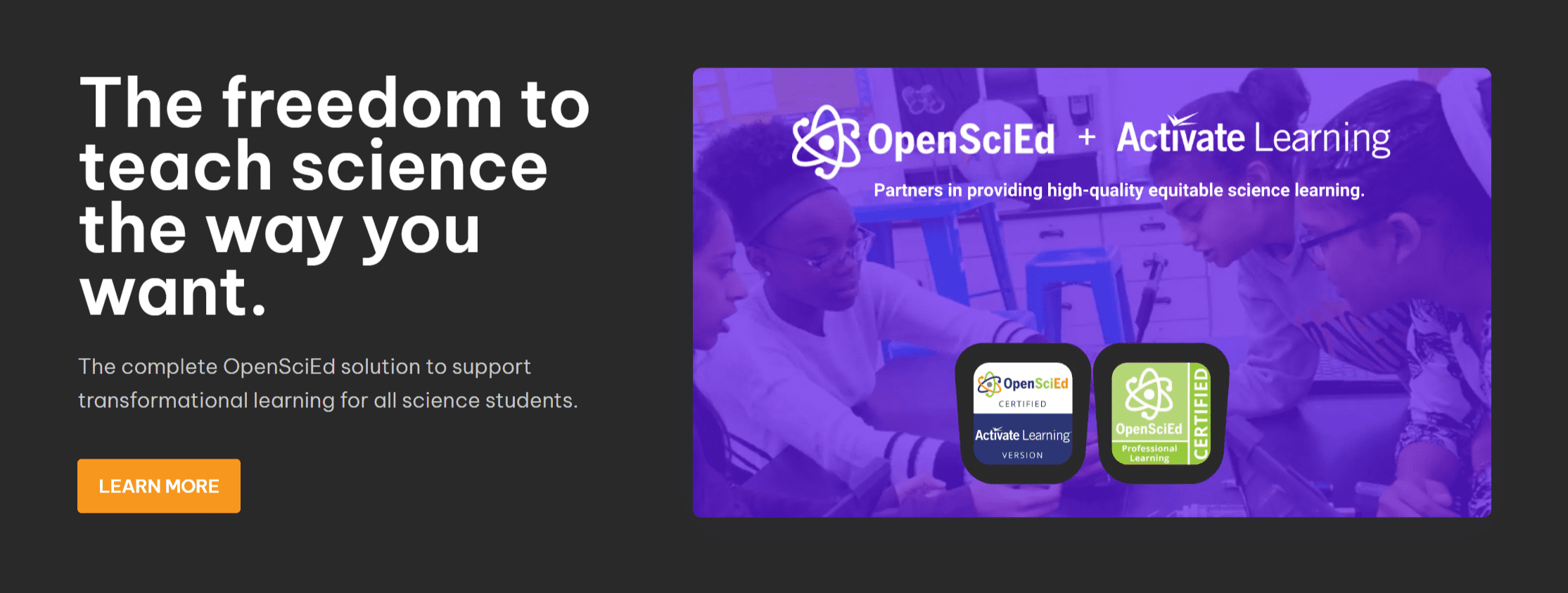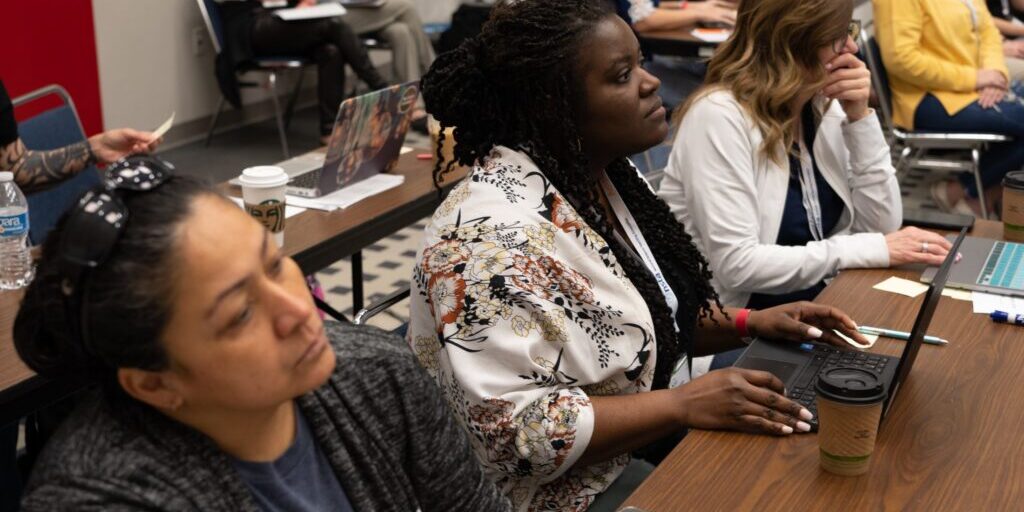Meet the New Curriculum Kid on the Block: The OpenSciEd High School Science Program Blasts Off!

Teachers and school leaders are pumped! Over the past 2 years, over 300 educators in 10 states have been giving OpenSciEd’s high school curriculum a test run and the results have been positive and inspiring.
The incredible success of OpenSciEd’s middle school program, including its recent “All-Green” rating by EdReports confirming its status as a high-quality science curriculum, has educators eagerly awaiting the opportunity to provide high school students with the same transformational science learning.
The wait is over! OpenSciEd is rolling out their highly-anticipated instructional materials starting this month, with more units being released gradually over the next year.
Activate Learning is a certified provider for the OpenSciEd High School curriculum and the first set of published units are now available on the Activate Learning Digital Platform. Connect with us to learn more!
The full OpenSciEd high school program will be available by early 2024. View the full Unit Release Schedule below.

Developed by the High School Development Consortium including Northwestern University, Horizon Research, Inc., and The University of Texas at Austin, to name a few, the new high school materials will enable students to investigate phenomena in Biology, Chemistry, and Physics, with Earth and Space Science integrated throughout.
In this blog post, we’ll reveal why this new OpenSciEd high school curriculum is the game-changer students have been waiting for and give you a sneak peek into the materials.
Why There’s an Urgent Need for High-Quality Science Learning in High Schools Now
The need for high-quality science education in high schools has always been critical, but it’s now even more important due to the impact of COVID-19 on science education.
A recent report published by the Public Policy Institute of California (The Impact of COVID-19 on Science Education) found that COVID-19 derailed science education in most school districts in California and that support for science education was limited throughout the pandemic. Furthermore, most district recovery plans still do not prioritize science education. The report suggests investing in science education and instructional materials aligned with the Next Generation Science Standards (NGSS) to recover student learning loss.
Here are several reasons why science learning is essential for high school students, beyond just recovering pandemic-related loss:
- Scientific literacy: Understanding science is a critical component of informed decision making, both in personal and public life, and for evaluating scientific information.
- Career opportunities: Science and technology play a significant role in today’s economy and job market, and a strong foundation in science is required for many high-demand careers.
- Problem-solving skills: Scientific inquiry requires students to ask questions, gather data, analyze information, and draw conclusions which helps develop critical thinking, creativity, and problem-solving skills — all of which are essential for success in the workforce.
- Global challenges: Today’s world is facing many complex global challenges, such as climate change, health pandemics, and environmental degradation, which require scientific solutions. Giving students a strong foundation in science will empower them to understand these challenges and work towards finding solutions.
- Scientific advancements: The rapid pace of scientific and technological advancements is creating new opportunities and shaping the future. High school students need to be prepared to understand, adapt to, and shape these changes.
High schools must provide students with exceptional and equitable science learning experiences, including opportunities to participate in workforce programs, to help them recover from pandemic learning loss and set them up for success in STEM careers.
Research supports the importance of high-quality science education for high school students. A study by the National Science Foundation found that students who receive high-quality science education are more likely to pursue careers in STEM fields and have higher levels of scientific literacy. And in a recent report by the National Academies of Sciences, Engineering, and Medicine, researchers called on the federal government to make science education a priority, noting that only 22 percent of American high school graduates are proficient in science.
The Good News: High School Students Are Motivated and Want Deeper STEM Learning!
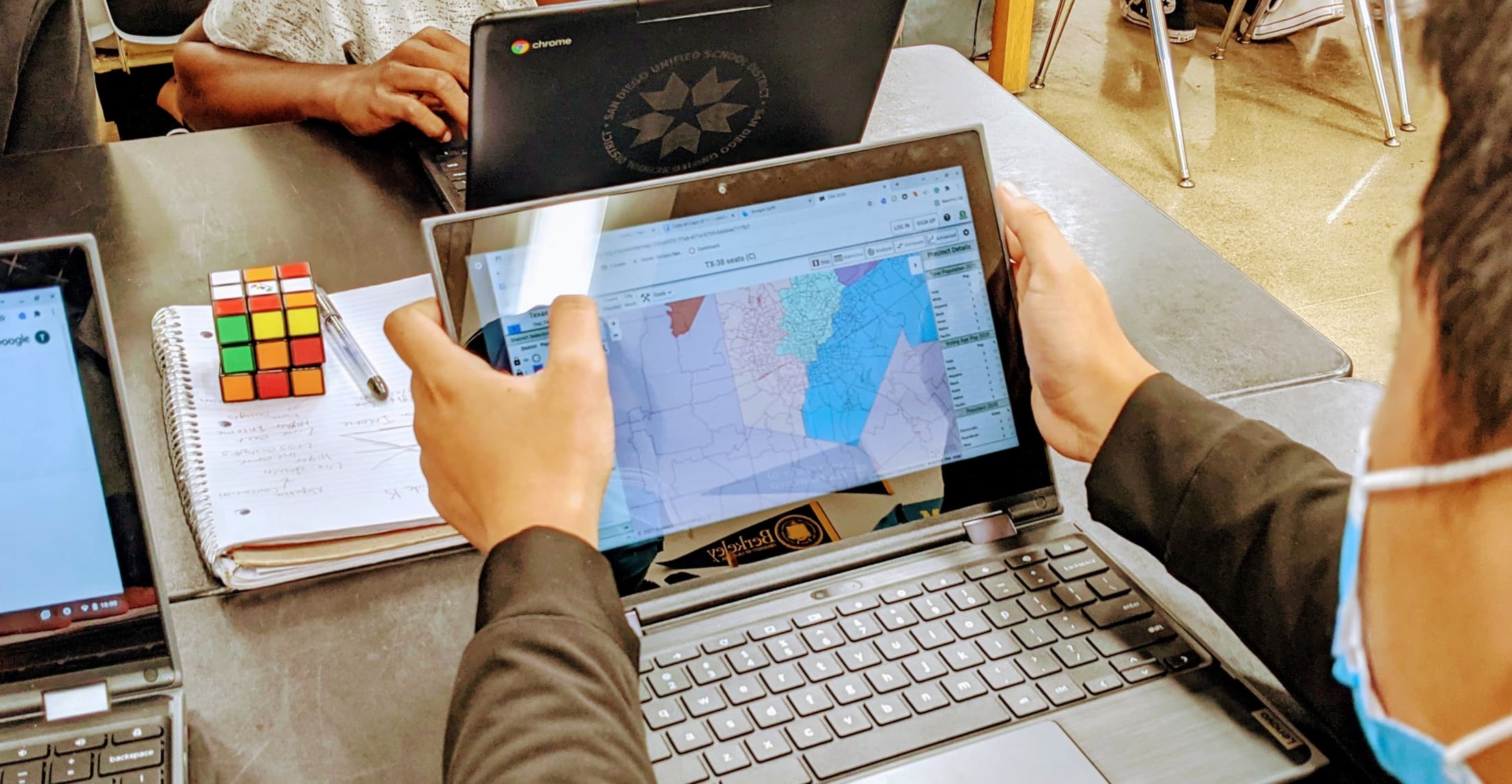
The silver lining of the pandemic is that students are motivated to make up for lost learning and eager to explore STEM careers!
In our blog post, Why STEM Students Want Deeper Learning Now and How Teachers Can Help Them Achieve It, we cited research from American Museum of Natural History and SRI International that explored how high school and college students felt about their learning throughout the pandemic. The study, which surveyed 560 students in STEM programs, found that almost all of the students surveyed (85%) believed the pandemic had a negative impact on their academic growth and caused significant learning loss in three key areas that are crucial for deeper learning: (1) foundational understanding of key concepts, (2) peer collaboration, and (3) building relationships.
The National Society of High School Scholars recently surveyed over 11,495 high school and college students from diverse ethnic backgrounds across the U.S. on their desired career choices (STEM Fields are Top Choice for Gen Z Students). STEM was the top career choice for most students and most of them (82%) plan to complete an internship before graduating high school. The report also listed the most popular STEM fields of interest according to students:
- 27% plan to enter a medicine or health-related field.
- 20% plan to work in the healthcare field.
- 19% plan to enter a business or corporate career field.
- 18% plan on a career in engineering.
- 18% plan on a career in the sciences.
- 16% plan on a career in business.
- 12% plan on a career in technology.
- 7% plan on a career in math.
High school students are also expressing interest in learning about climate change and careers in sustainability. According to new research by EdWeek Research Center that surveyed 1,000 teenagers, 30 percent of the participants said they wanted to learn more about job opportunities in climate change while only 22 percent of teachers surveyed report discussing these career options in the classroom.
How can schools offer top-notch science education that empowers high school students and adequately prepares them for the future?
How OpenSciEd High School Curriculum Will Disrupt How Science Is Taught in High Schools
With the much-anticipated rollout of OpenSciEd’s high school materials this month, schools can finally empower teachers with the tools and validation they need to give students the equitable, deeper learning they deserve.
The excitement expressed by many teachers who participated in field testing the high school materials over the past two years is real and palpable!
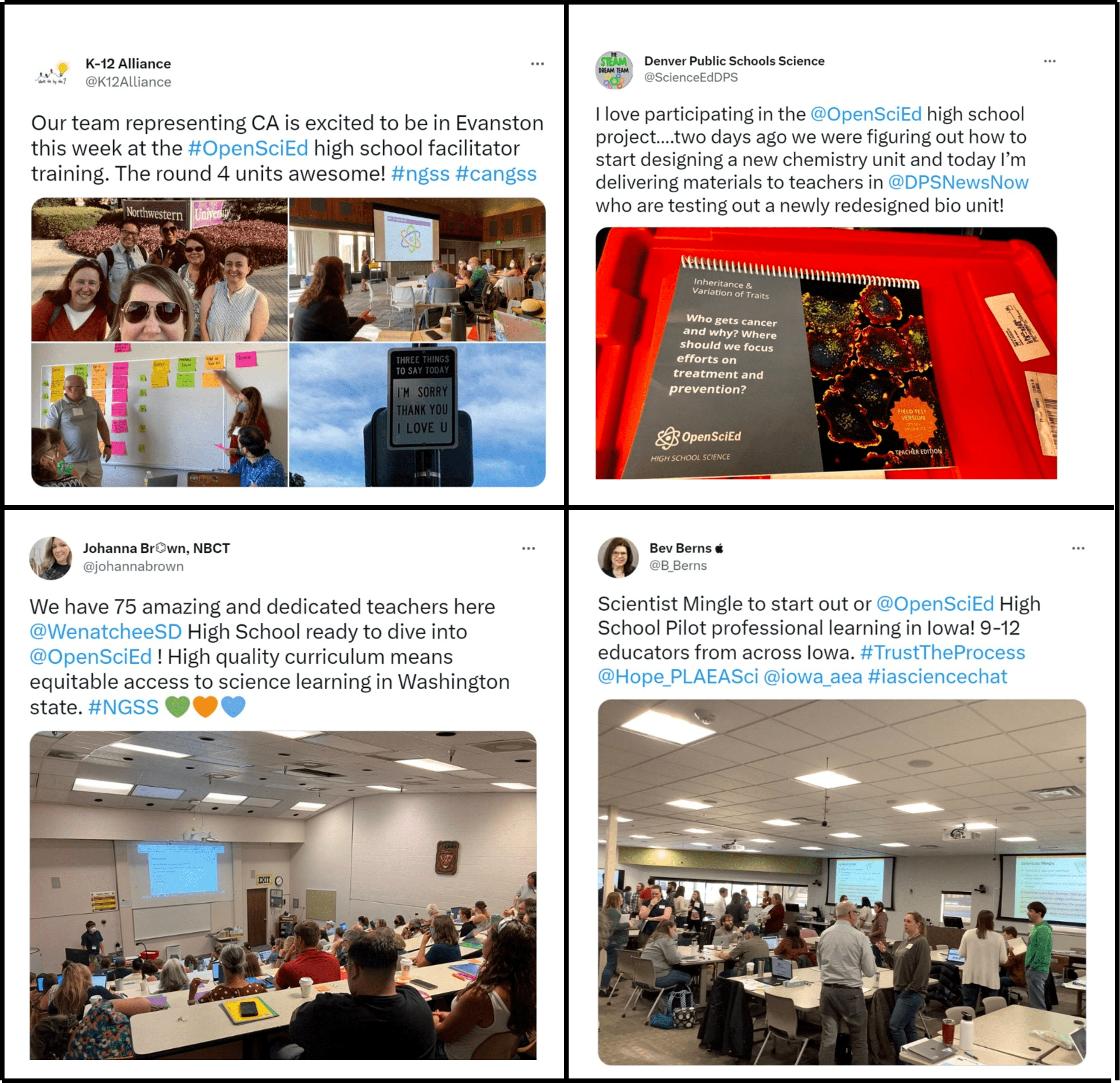
The fact is OpenSciEd has earned widespread support and accolades for giving teachers a wide range of free resources such as lesson plans, student activities, and assessments. And their high school units uphold their mission of providing equal access to a top-notch science education for all students.
The high school materials follow a similar structure to the middle school materials, but there are significant differences in high school and middle school science learning, including: (1) complexity of topics, (2) higher abstract thinking, (3) higher mathematical skills, (4) more lab work, and (5) career preparation.
And OpenSciEd’s high school materials masterfully build on their middle school program to support student growth and development. The following tweet thread by William Baur (middle school science teacher and OpenSciEd Project Manager), offers a great example this.

How will this new curriculum promote equitable learning and inspire high school students to embrace scientific thinking?
OpenSciEd’s innovative model turns students into collaborative problem-solvers. With the teacher as a guide, students engage in hands-on investigations of the natural or designed world, leading to deeper learning through cycles of questioning, testing, and refining their understanding. This three-dimensional approach aligns 100 percent with the NGSS and creates a cohesive learning experience through structured routines and a clear storyline.
The materials bring student-centered learning to life with units anchored in real-world phenomena and problems, connecting to student interests and experiences. This approach to equitable learning is made possible by giving students a voice through Student Interest Surveys. Throughout the field test phase, high school students were asked about their interests and the results were analyzed by subgroups including location, gender, language, and race/ethnicity to create a learning roadmap tailored to each student’s needs.
The Design Specifications and Instructional Model of the high school materials are based on A Framework for K-12 Science Education and the NGSS, which emphasizes three-dimensional learning that integrates science and engineering practices, crosscutting concepts, and disciplinary core ideas – giving students a combination of complex knowledge and advanced skills with an understanding of how to apply them to new contexts and situations (the foundation for deeper learning).
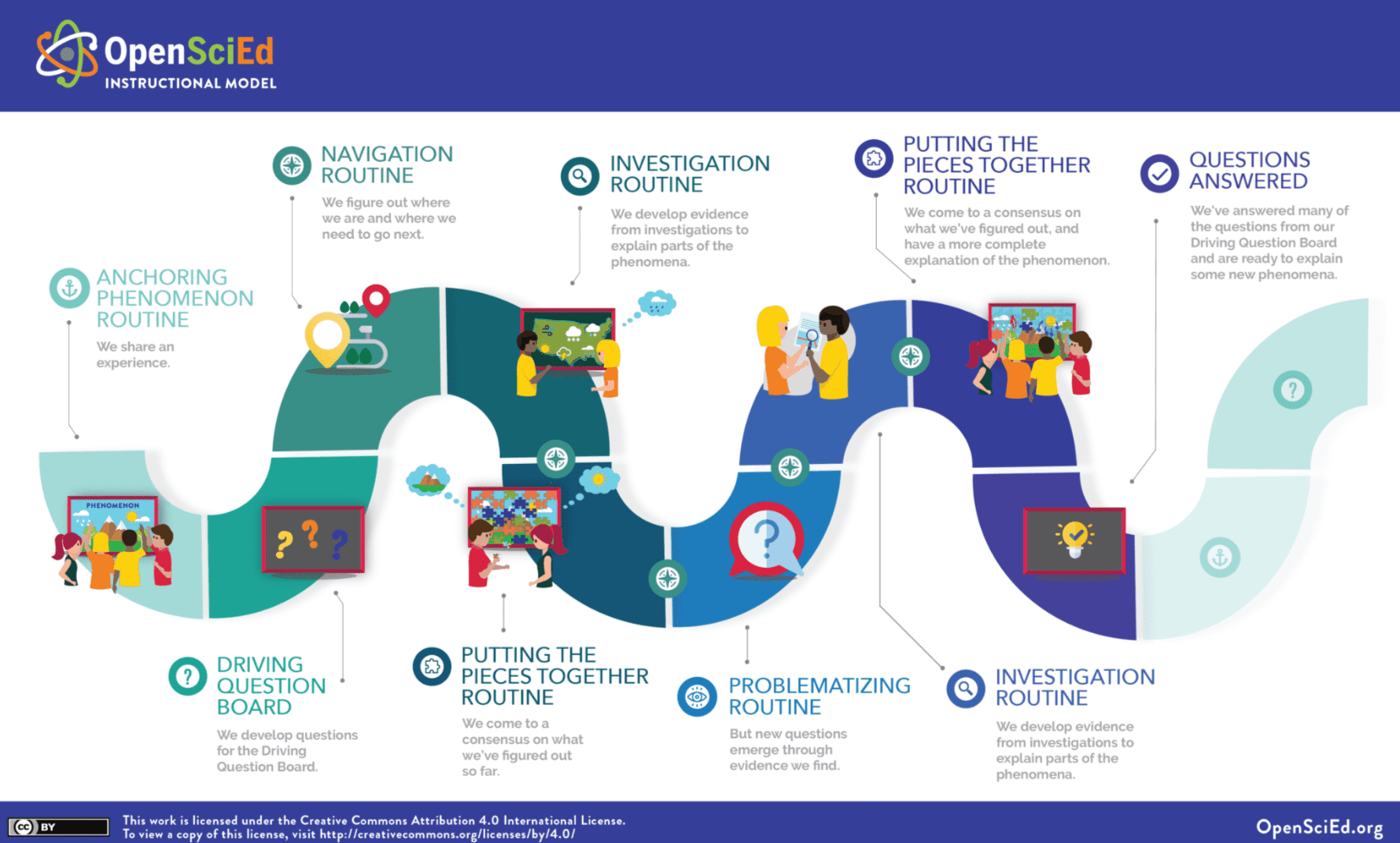
The Instructional Model is the way teachers will implement the design specifications in the classroom and engage students. In the Instruction Model:
- units are organized into a coherent storyline;
- student sensemaking of anchoring phenomena and challenges drive the units;
- learning as a classroom community is supported through a flow of activity that includes individual, pair, small group, and whole group discussion;
- students engage in incremental revision and synthesis of ideas; and
- units fit into the scope and sequence with explicit connections.
Teachers will have numerous tools available to them to engage students in class and virtually, assess lessons, and create lessons. For example, Activate Learning’s Interactive Digital Platform will allow teachers to do all of this (and more!) in one platform. And, through continuous Professional Development, teachers will have the support they need to strategically and successfully implement the new curriculum.
How to Learn More About OpenSciEd’s High School Curriculum
The team at OpenSciEd has done a fantastic job of sharing detailed information and resources about the development of their high school program on their website. Learn more about the program Scope & Sequence and Design Specifications and Instructional Model.
Stay updated on the rollout and get tips, tools, and strategies for implementing OpenSciEd curriculums by subscribing to our monthly newsletter, Activate OpenSciEd and reading our Deeper Learning blog.
Join us on the mission to bring equitable, top-notch science learning to all students with OpenSciEd’s high school materials launch! As a proud partner and official distributor, we’ll provide everything you need for successful implementation, from science kits and materials to professional learning.
Have questions? We’re here to help! Let’s start the countdown to better science education in high schools now! Connect with us to get started.
* * * * *
Related Posts:

